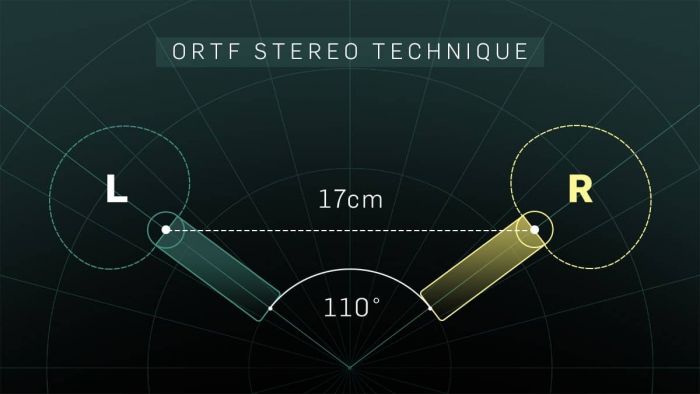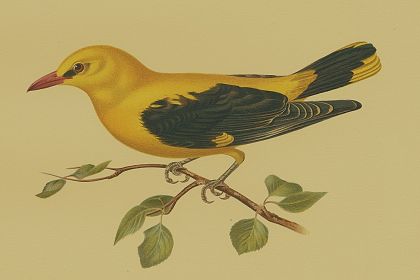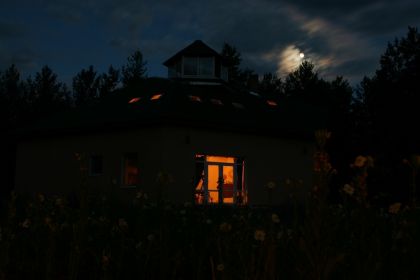Nature Sounds
4 best stereo techniques to record nature sounds

Flowers by Childed
Country: Ukraine
Genre: Soundscapes
The best time to record woodland sounds of crickets is at the very beginning of autumn when birdsongs have gone mostly silent and other forest inhabitants show minimal activity as nights get progressively colder. The optimal background for diluting the crickets chirping, which in itself can be tiring, is a light wind in contact with greenery such as when it rustles tree leaves or shifts conifer branches.
This review includes the nature sounds of one overnight recording session featuring cricket choirs, wind blowing, and other sounds of the woods. These soundscapes were recorded in autumn in the depths of a mixed forest where a set of microphones captured a stereo panorama using 4 basic stereo techniques. The captured soundscapes are that of a meadow with a diameter of about 100 meters (328 ft) that produces a multi-level echo and deep reverb. You can also download these nature sounds in HQ for free.
One of the most common methods to record nature sounds is undoubtedly the ORTF technique invented in the early 1960s by the Office de Radiodiffusion Télévision Française. The ORTF miking technique involves two cardioid microphones spread to a 110° angle and spaced 17 cm apart. It is assumed that the distance between the microphone capsules corresponds to the distance between the human ears, and the angle reproduces the effect of acoustic shielding generated naturally in the human head.

This stereo microphone technique is well suited for recording nature sounds particularly due to the ORTF array being designed to work with large-scale sources, including orchestras and choirs, and capture the entire ensemble with natural balance and perspective.
Listen to Woodland sounds of wind and crickets recorded on an autumn night using the ORTF stereo microphone technique:
The widespread X-Y stereo recording employs two directional microphones placed on top of one another or otherwise so that their capsules are positioned in the same place. Microphones need to be aimed at the outer margins of the sound source, and the angle between them is usually 90°.

The XY stereo is a great way to record a sound source at close range and is not quite suitable for soundscapes as the resulting stereo image is not deep enough. At the same time, a huge number of field recordings are captured by this method since portable devices are usually designed only for the XY technique.
Listen to Sounds of wind and crickets recorded in the woods at night using XY stereo microphone technique:
A more complex M/S technique or Mid/Side stereophony requires a bidirectional mic facing sideways and set to the figure of 8 polar pattern plus a directional mic facing the sound source and set to the cardioid pattern. One of the advantages of this method is the more flexible choice of microphones since the recording does not strictly require a matched pair.

Although the M/S stereo technique works best with single sound sources, it is sometimes chosen for recording orchestras and soundscapes due to the varying channel levels and panning flexibility during the mixing stage.
Listen to Crickets and wind recorded in the woods on autumn night using the M/S stereo microphone technique:
Another stereo technique suitable for recording nature sounds is the Blumlein pair in which microphones with a bi-directional figure-8 pickup pattern are positioned in the same way as in the XY stereo method. The sonic image produced by the Blumlein array is highly realistic and is sometimes awarded the epithet 'holographic'.

The bi-directional microphones in the Blumlein pair capture both the sound source itself and the surroundings behind it, contributing to the high level of reverb highly desired in soundscape recording.
Listen to Sounds of crickets and wind recorded in the woods on autumn night using the Blumlein pair:
All stereo techniques imply that the distance and angle between the microphones can be slightly corrected by ear to better capture the sound sources in the recording space; however, each specific microphone array configuration should not be altered greatly. The best height to mount microphones for capturing nature sounds typically ranges between 160-180cm.




No mention of the subtraction of the Figure-8 output from the Cardioid in M/S?
Well-done gathering of excellent material, though -- thanks for doing it!
-R